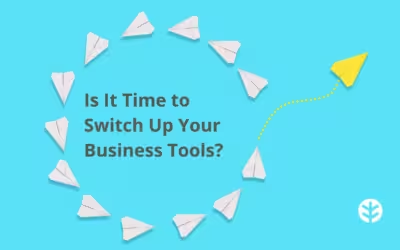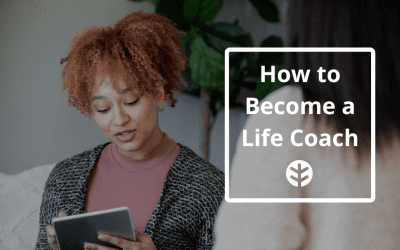Welcome! If you’re curious about inclusive yoga and accessibility for all, you’re in the right place. It’s natural to have questions about this vital topic, and the mere fact that you’re looking to learn more is a sign that you care about making sure everyone feels included and welcome. Let’s dig a little deeper.
Table of Contents:
Why Yoga Is Truly for Every Body
While many people in Western society see yoga as a physical practice, there is so much more to it. The physical practice, or asana, is just one of the many tools yoga has to offer.
These tools include Pranayama (breathing) and meditation. This powerful combination helps people with their mental and physical health in countless ways. If you have a body and can breathe, you can practice yoga. So, it really is for every body.
Creating inclusive yoga offerings that are also easily accessible is not only the right thing to do, but it’s also the smart thing to do, as you’ll create a community that will enhance your studio and practice while doing the same for your clients. While it can be hard to put how to make people feel included and welcome into words, below are some tangible indicators that yoga is meant to be inclusive:
- Customized Sequencing – ancient yogis in India would give their students very customized practices based on their unique situations. Group classes and studios that we see now simply did not exist.
- Modern Yoga & T.K.V. Desikachar – It’s no secret that Desikachar significantly impacted modern yoga and believed each individual should have a unique approach to yoga. This approach is now called Viniyoga. This lineage is all about adapting based on the needs of the individual.
- Accessibility—While not everyone had access to a guru in the early days of yoga, it still existed in everyday life. It was free, which made it more accessible than it is today.
Learn Concrete Ways to Make Your Practice More Accessible
In this webinar, Jivana Heyman, founder of Accessible Yoga, explores how you can make your classes more accessible and appropriate for all your students
Benefits of Inclusivity in Yoga
In addition to being the right thing to do, inclusive yoga offers many benefits:
- Community Building: People go where they feel seen, heard, and welcomed – what a fabulous way to build your community.
- Yoga Studio Success: It’s well-documented that inclusive businesses are more successful than those that are not. This will also lead to higher retention of quality yoga instructors – inclusivity increases morale.
- Improved Mental & Physical Health: By welcoming a wide variety of people to your studio, you’ll help build a more vibrant community and improve the overall wellness in your area over time.
Why There is Resistance to Inclusive Yoga
It’s human nature to be afraid of things that are new to us. Fear was a survival tool in primordial days. Thankfully, we’ve evolved to be curious, not just fearful of new things. Still, some folks have resisted inclusive yoga because it’s unfamiliar. Below are some other reasons for resistance:
- Perceived Complexity: There is a misconception that being inclusive takes time and money. While it takes effort, it’s easier than some think. You can find success by breaking down your overall inclusion goals into small, tangible steps.
- Fear of Change: Many people resist change, even when it’s for the greater good. If this sounds like you, now is your chance to offer support and understanding.
- Lack of Education: Even when people know being inclusive is necessary, they simply don’t know where to start. Thankfully, many resources are available, and there are consultants in this space if you need additional guidance.
What Inclusive Yoga Means in Practice
Inclusive yoga looks different and can mean something different depending on your identity. However, if you’re wondering how to foster inclusivity in your classes, some foundational principles must be considered. Let’s review those basic elements.
Key Principles of Inclusive Yoga
- Accessibility: Ideally, your studio is easy to get to for your current and prospective clients and is ADA-compliant.
- Programming: Once you understand your community’s unique needs, use this information to tailor your programming. This could include chair yoga, prenatal yoga, trauma-informed yoga, etc.
- Adaptability: Seeing people as unique individuals with varying needs often helps instructors think about their practice from a different perspective. With props and such, you can easily support simplified or modified options in your classes.
- Communication: Inclusive yoga excludes written and verbal communication that is biased or gendered.
How to Create an Inclusive Space
Is your space physically accessible? Does it allow folks with a physical disability to get around easily? Does it allow folks of minority identities to feel safe? Consider the following:
- Try to find a studio with a parking lot or close to public transportation
- Clear sidewalks and hallways are important
- Gender-neutral restrooms and welcoming signage in the studio go a long way
- Props and supportive equipment for class are critical
If your studio has a team of yoga instructors and other staff, you’ll want to ensure they are also committed to inclusivity.
Inclusive Teaching Practices
In addition to offering diverse programming, there are many ways to promote inclusivity before, during, or after class.
- Inclusive Cuing: Words matter. Instead of saying, “If you can’t do X, try Y,” try teaching from the modification up. For example, show the most accessible version of a posture and say, “If this feels good, stay right here.” Then, offer a more physically challenging option for those who want and need to go a bit deeper.
- Promote Props: You may have noticed some people resist using props during classes. Some may see using them as a weakness due to the “no pain, no gain” culture from years ago. As a yoga instructor, you can use them to show your students how to use them and embrace them.
- Observe, Analyze, and Adapt: This will set you apart. Keep an eye on the nonverbal cues your clients share with you. If someone is muscling their way into a posture that isn’t benefitting them, you can, without putting them on the spot, offer a modification or suggest another pose to try. Or, shift your sequence if you notice the overall class needs something different energetically than your original plan (while staying true to the class style).
- Inclusive Pricing: Consider offering sliding-scale pricing; this will make your offerings more accessible. Or how about a monthly donation-based event that’s open to all?
- Be Open, Be You: People love authenticity. When you’re open and show your uniqueness, that invites others to do the same. And be gentle with yourself—some of the above practices can take years of teaching to develop.

Leveraging Technology for Accessibility
Accessibility goes beyond the mat. Leveraging technology will help you create a truly inclusive yoga studio environment. Consider the following:
- Offer Online & Hybrid Classes: Yoga for people with disabilities can be more inclusive if you offer online or hybrid classes so those with transportation challenges can have greater access.
- Embrace Medical Technology: While yoga is the perfect opportunity to step away from our phones and smartwatches, some people wear necessary medical devices that are sometimes controlled by their phones. By discreetly allowing this technology in class (airplane or DND mode, please), you’ll hear the relief of clients who need these technologies.
Resources for Further Learning
Interested in learning more? While fostering inclusivity can vary from studio to studio based on your community’s demographics, several resources are available to continue your learning regardless of those differences. Below are some we recommend:
- Yoga for Every Body: Book by Dianne Bondy, Dianne also offers training and other resources on her website.
- Mind Body Solutions: This organization, founded by Matthew Sanford, offers resources for yoga instructors and adaptive yoga worldwide. Try a class, and you’ll better understand what is important to those who’ve experienced trauma, loss, and/or disability.
- Yoga for Wellness: Gary Kraftsow’s book is an accessible introduction to the ancient teachings of viniyoga.
- Yoga Alliance: You may already be registered with YA. If you are, you may have access to some of their training on inclusivity, including Creating an Inclusive Culture in Yoga Class.
Learn How to Authentically Bring Yoga Philosophy to Your Practice
Watch our webinar with Barrie Risman to learn how you bring yoga philosophy into your classes in a way that feels accessible for your students and authentic to you.
Find Expert Advice for Yoga Teachers in Our Blog
Hopefully, this article has left you with a better understanding of the importance of creating an inclusive yoga studio and some takeaways you can start to implement over time. Be sure to keep reading our blog for more insights on how to navigate your yoga business. Offering Tree can also make the technology piece easier for you—sign up for a 7-day free trial (no credit card info required!) to see for yourself.




